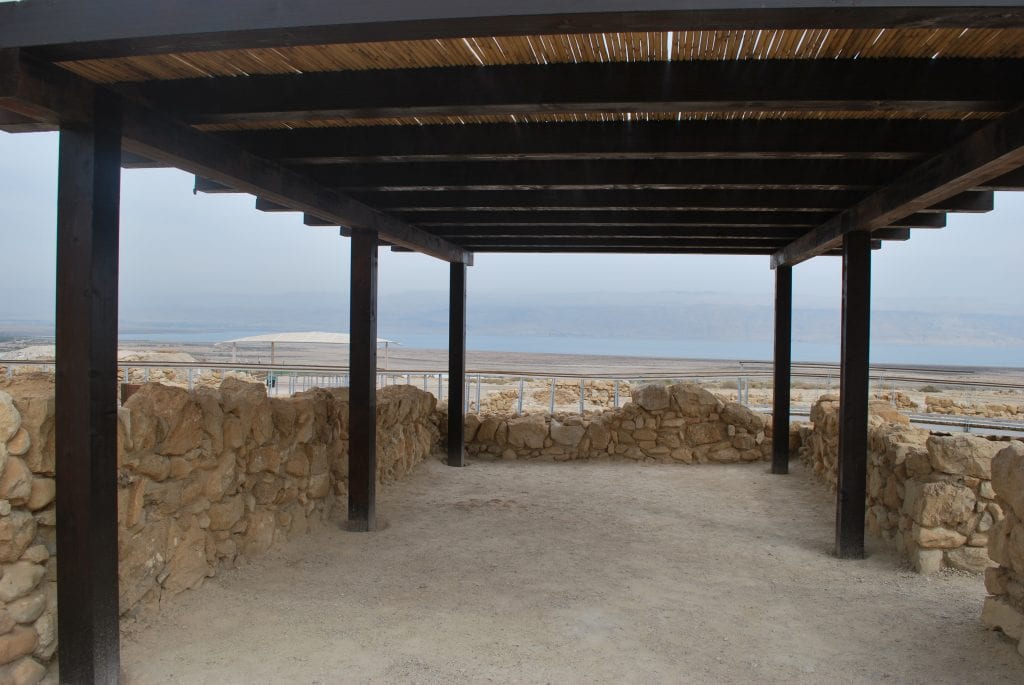Israel is home to some of the most excavated ancient Biblical sites in the world. One of my highlights was a visit to Qumran, the site where the Dead Sea Scrolls were discovered. The Dead Sea Scrolls are often referred to as the most famous manuscripts discovered in history, and the excavated site is now an archeological National Park. The Park is located in the West Bank, near to the Dead Sea itself
Contents
Why is Qumran Famous?
Let’s wind back the clock to the 2nd Century B.C.E – 1st Century B.C.E when the Essenes (an ancient Jewish sect) inhabited Qumran. Shortly after an earthquake under Herod’s reign, the area was deserted, but the Essenes returned to rebuild their settlement.
The Essenes were a Jewish group who were ascetics, and paid a great deal of attention to ritual bathing or washing in the Mikveh (Jewish Ritual Bath). They lead a community life in Qumran, dining together and living in a settlement that was purposefully designed so that they could be self-reliant. The Essenes had a scriptorium, where many manuscripts were written.
What were the Dead Sea Scrolls?
Amongst the scripts that were written by the Essenes in Qumran were the Dead Sea Scrolls. These scrolls contained parts of the Old Testament, the Apocrypha (Biblical writings that were not included in the Biblical Canon or Bible itself) and some of the Essenes’ own writings.
The Dead Sea Scrolls remained hidden in jars in a cave in Qumran for 2000 years until their discovery in 1947 by a Bedouin Shepherd. Following their discovery, the site was excavated by Father R. de Vaux and a group of French archeologists between 1951 and 1956.
Visiting Qumran National Park
Qumran National Park is now open to visitors, and you are greeted by a movie that explains who the Essenes were and why they set up the settlement in the way that they did. 95% of the Dead Sea Scrolls were discovered in the cave pictured above.
What followed the discovery of the scrolls was the uncovering of the entire ancient settlement including a dining room, pottery workshop, aqueduct, kitchen, cattle pen, and several Mikveh.
Around this settlement, members of the group lived in tents and huts.
Practicalities – getting to Qumran National Park
You can easily drive to Qumran from Jerusalem in around an hour. From Tel Aviv, it’s a little further and will take around an hour and a half. Remember to carry your passport when driving around Israel, incase of security checks or driving through Israeli-Palestinian borders. You are not always stopped at borders, but be prepared for checks, especially if you are traveling from Palestinian territories, such as Bethlehem.
The easiest way to visit Qumran is as part of a tour. It only actually takes around 2 hours to see the park and the entrance cost is 21NIS for adults and 9NIS for kids. Some tours include the entrance fee and a guided tour of the archeological site. Others just drop you off at the visitors centre entrance where you have to pay yourself in and tour the site yourself. Check when you book a trip exactly what is included to make sure that you get what you want.
Some good companies to use are Tourist Israel and Abraham’s Hostels (Tel Aviv, Jerusalem and Nazareth). I combined my day trip to Qumran with a visit to Bethlehem, Jericho and the Dead Sea. It was quite a packed day, so I would recommend fewer stops in one day if you really want time to take things in and learn more about each place.
Combine your visit with a trip to the Dead Sea
In a day trip, you can easily visit the Dead Sea as well as Qumran. So pack your beach gear descend to the lowest point on earth and prepare to float in the saline waters! Also, the views of the Dead Sea from Qumran are spectacular.
About the Author
Amy Trumpeter is a travel writer with a BA in Religions and Theology and an MA in South Asian Studies from Manchester University. She writes for www.templeseeker.com, and travels the world’s most amazing religious and historical sites.





